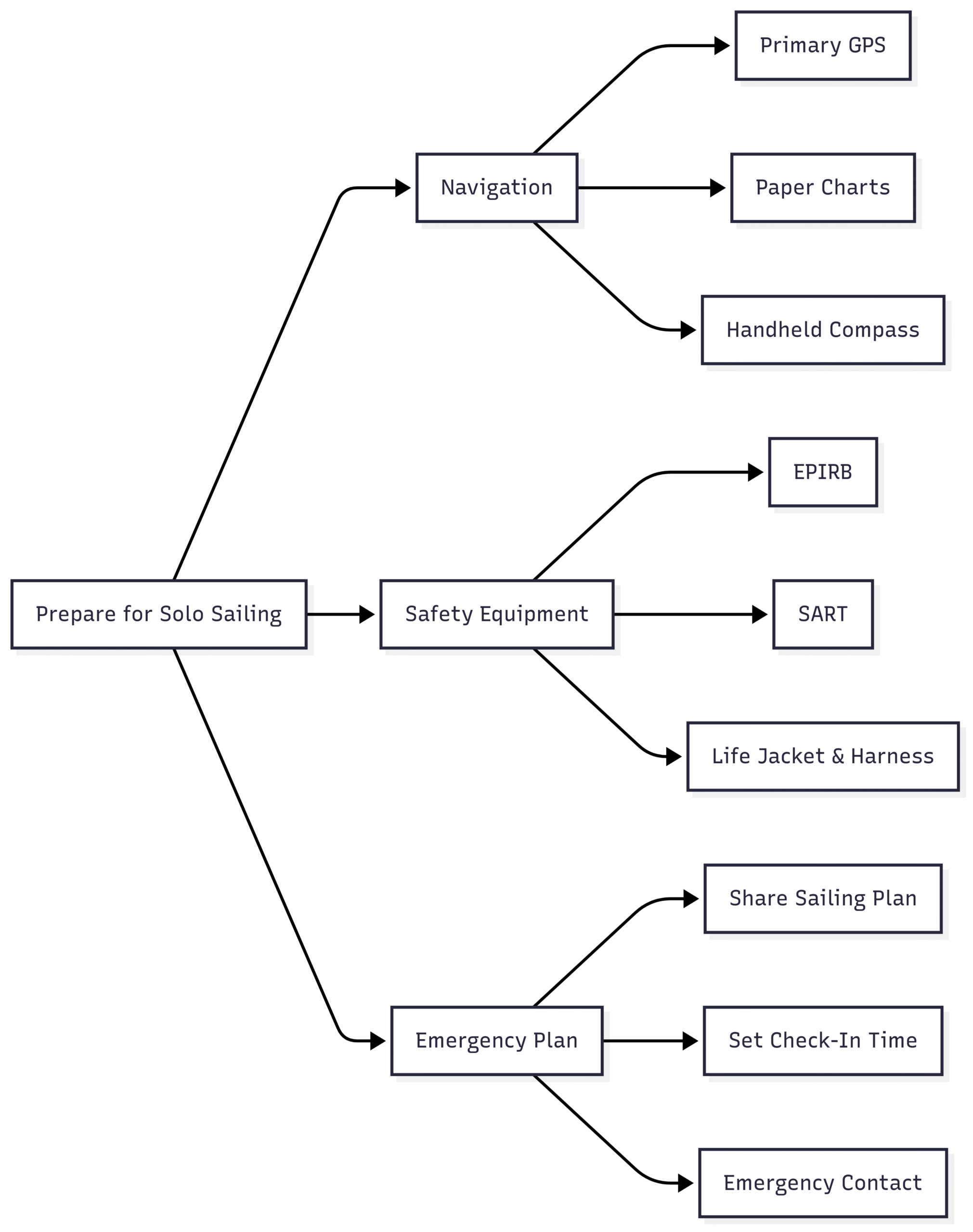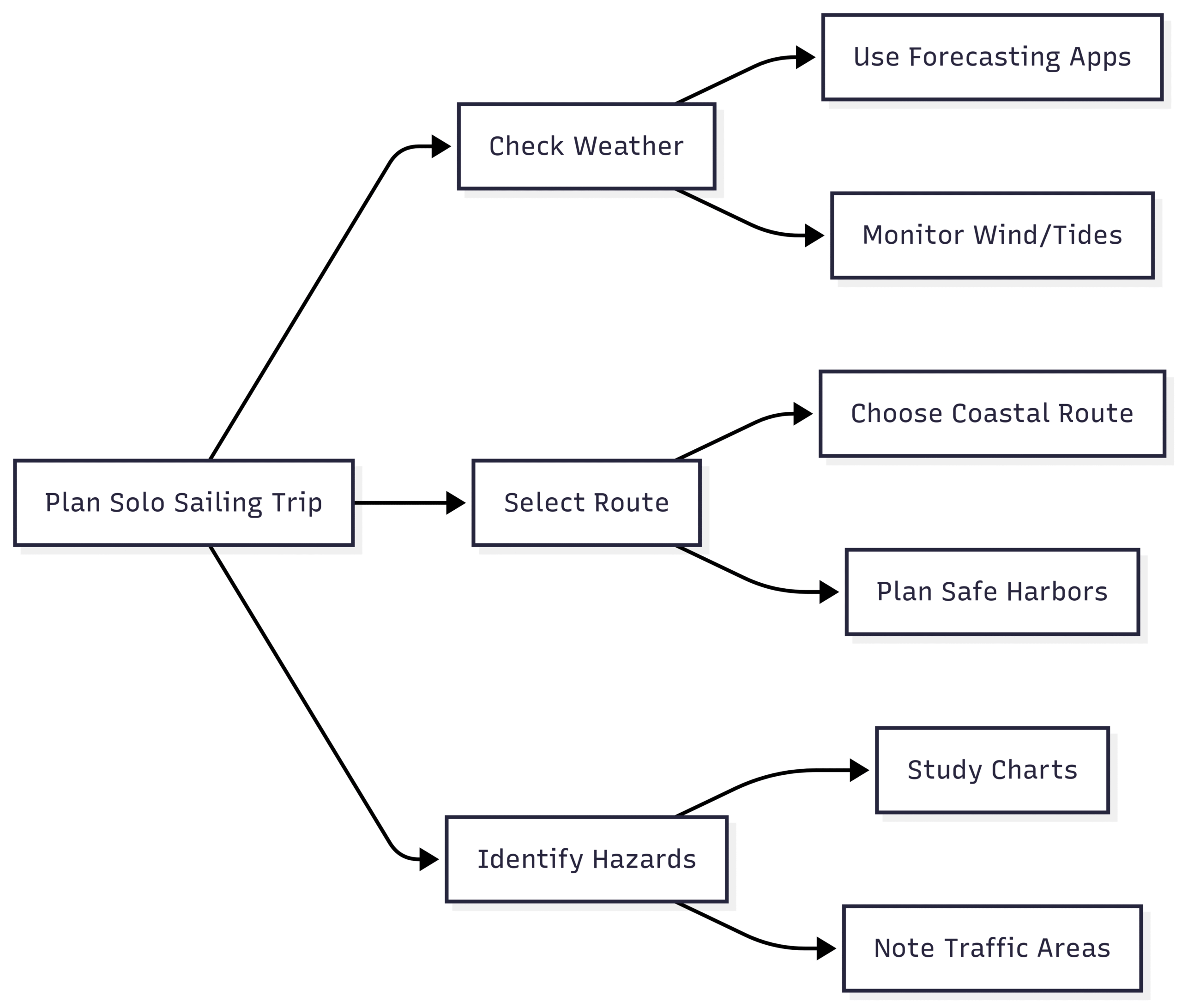How to start with solo sailing?
Learn how to start solo sailing with expert tips on boat selection, skills, safety, and preparation for a rewarding adventure.
Solo sailing offers a unique blend of adventure, self-reliance, and connection with nature. For those drawn to the open sea, the prospect of navigating a sailboat alone is both exhilarating and daunting. This guide provides a detailed roadmap for beginners, covering essential skills, boat selection, safety measures, and practical steps to embark on your solo sailing journey. Whether you aim to sail close to the coast or venture into the open ocean, this article equips you with the knowledge to start confidently.
Why Solo Sailing?
Solo sailing is a pursuit of freedom and self-discovery. It allows you to set your own course, make independent decisions, and embrace the solitude of the sea. Unlike crewed sailing, where responsibilities are shared, solo sailing demands complete self-reliance, making it a deeply rewarding experience. The allure lies in mastering the boat, the elements, and your own resilience, as exemplified by sailors like Jacqueline Evers, who embarked on a solo circumnavigation in her 27-foot sloop, finding profound connection rather than loneliness.
However, solo sailing is not without challenges. It requires a high level of skill, preparation, and mental fortitude. Beginners often face hurdles like limited experience, choosing the right boat, and managing the isolation of long voyages. This guide addresses these challenges, drawing on expert advice and community insights to help you navigate the path to solo sailing.
Key Considerations for Solo Sailing
1. Experience and Skill Development
Solo sailing demands proficiency in all aspects of sailing, as there’s no crew to rely on. Beginners should master:
- Sail Handling: Adjusting sails, tacking, and gybing without assistance.
- Navigation: Using charts, GPS, and traditional methods like dead reckoning.
- Boat Maintenance: Performing basic repairs, such as fixing sails or troubleshooting engine issues.
- Heavy Weather Sailing: Managing the boat in strong winds or rough seas.
Action Steps:
- Take Formal Courses: Enroll in sailing schools offering certifications like ASA (American Sailing Association) or RYA (Royal Yachting Association). These courses cover fundamentals and build confidence.
- Sail with a Crew First: Gain experience by crewing on larger boats (7-11 meters). Practice each role—helm, sail trim, navigation—to understand the boat’s systems. As one sailor advised, “Sail with people more knowledgeable than you to fast-track your learning.”
- Practice Solo Tasks with a Crew: Simulate solo sailing by taking the helm alone while crew members observe, ready to assist if needed. Practice tacking, gybing, and docking to build muscle memory.
Timeline for Skill Development:
| Experience Level | Recommended Time | Activities |
|---|---|---|
| Beginner | 4-8 weekends | Take sailing courses, crew on small boats (e.g., Lasers, Sunfish) |
| Intermediate | 1-2 seasons (15-20 weekends each) | Crew on larger boats, practice solo tasks, learn maintenance |
| Ready for Solo | 2-3 seasons | Confidently handle all boat operations, simulate solo trips |
2. Choosing the Right Boat
Selecting a boat suited for solo sailing is critical. Smaller boats (27-40 feet) are generally recommended for beginners due to their manageability.
Boat Size and Type:
- 27-32 Feet: Ideal for new solo sailors. These boats, like Jacqueline Evers’ 27-foot sloop, are easier to handle and maintain. Examples include the Tartan 27 or Cal 33.
- 32-40 Feet: Suitable for those with some experience. Boats like the Beneteau 331 or Oceanis 41.1 offer more space but require careful setup for solo handling.
- Dinghies (e.g., Laser, Sunfish): Great for learning sail trim and boat response, but skills may not fully translate to larger keelboats.
Key Features for Solo Sailing:
- Lines Led to Cockpit: Halyards, sheets, and reefing lines should be accessible from the cockpit to minimize movement on deck.
- Autopilot or Wind Vane: Essential for maintaining course while you perform other tasks.
- Furling Sails: In-mast or roller furling mainsails and genoas simplify sail handling.
- Stable Hull Design: Avoid round-bottom boats like Lasers for beginners, as they can be tippy and challenging.
Boat Recommendations:
| Boat Model | Length | Key Features | Approx. Price (Used) |
|---|---|---|---|
| Tartan 27 | 27 ft | Stable, simple systems, cockpit lines | $10,000-$20,000 |
| Cal 33 | 33 ft | Furling sails, autopilot compatible | $20,000-$35,000 |
| Beneteau 331 | 33 ft | In-mast furling, spacious cockpit | $40,000-$60,000 |
| Oceanis 41.1 | 41 ft | Advanced systems, requires experience | $100,000-$150,000 |
Action Steps:
- Rent Before Buying: Start with small boats like Lasers or a Sea Eagle 380X with a quicksail kit to practice. Rentals are affordable ($50-$200/day) and help you understand boat handling.
- Research Boat Features: Ensure the boat has centralized controls and reliable systems. As one sailor noted, “Pick a boat with lines coming to the cockpit for easier solo handling.”
- Consult Experts: Join sailing clubs or online communities (e.g., r/sailing) to get recommendations tailored to your region, such as the Mediterranean.
3. Safety Precautions
Safety is paramount in solo sailing, as you’re your own first responder. Key safety measures include:
- Backup Navigation Systems: Carry paper charts, a handheld GPS, and a compass in case electronics fail.
- Autopilot or Wind Vane: Allows you to leave the helm briefly for tasks like sail adjustments.
- Safety Kit: Include an EPIRB (Emergency Position Indicating Radio Beacon), SART (Search and Rescue Transponder), life jacket, harness, and tether. A comprehensive kit costs $500-$1,500.
- Emergency Contact Plan: Inform a trusted person of your sailing plan and expected return time. They should contact emergency services if you don’t check in.
Safety Checklist:

Action Steps:
- Invest in Safety Gear: Purchase a reliable EPIRB ($400-$800) and ensure your life jacket has a built-in harness ($100-$200).
- Learn Safety Protocols: Attend workshops on emergency procedures, such as man-overboard recovery or storm tactics.
- Practice Heaving-To: This technique stabilizes the boat, allowing you to rest, eat, or make repairs. As one sailor emphasized, “Heave-to is the secret power of the solo sailor.”
4. Physical and Mental Preparation
Physical Fitness:
Solo sailing is physically demanding, especially in rough conditions. Tasks like hoisting sails or hauling lines require strength and stamina.
- Exercise Regularly: Focus on core strength, endurance, and flexibility. Activities like swimming or yoga are ideal.
- Simulate Conditions: Practice sail handling in strong winds to build confidence and endurance.
Mental Resilience:
The isolation of solo sailing can be mentally taxing. Jacqueline Evers, for instance, found solitude enriching through meditation and reflection.
- Build Mental Fortitude: Practice mindfulness or journaling to cope with loneliness or stress.
- Prepare for Emergencies: Mentally rehearse scenarios like equipment failure or heavy weather to reduce anxiety.
Action Steps:
- Join a Gym or Outdoor Group: Regular exercise costs $20-$100/month, depending on the program.
- Read on Solo Sailing: Books like Singlehanded Sailing by Andrew Evans provide insights into mental preparation.
5. Planning and Route Selection
Thorough planning is critical for safe solo sailing. Key aspects include:
- Weather Forecasting: Use apps like PredictWind or Windy to monitor conditions. Avoid sailing in winds above 20 knots as a beginner.
- Route Planning: Start with short coastal trips (e.g., along the Mediterranean coast). Plan routes with safe harbors nearby.
- Hazard Awareness: Study charts for rocks, shallows, or heavy traffic areas.
Sample Route Planning Process:

Action Steps:
- Start Small: Begin with day trips (4-8 hours) near shore. Gradually extend to overnight passages.
- Use Technology: Invest in a subscription to PredictWind ($100-$300/year) for accurate forecasts.
- Create Checklists: Develop a pre-departure checklist covering sails, engine, and safety gear.
Practical Steps to Get Started
Step 1: Take Sailing Courses
Enroll in beginner courses to learn sail handling, navigation, and safety. In the EU, RYA courses are widely available (€300-€600 for a weekend course). These provide structured learning and certification.
Step 2: Gain Crewed Experience
Spend 1-2 seasons (15-20 weekends each) crewing on boats of varying sizes. Join sailing clubs or use platforms like Crewseekers to find opportunities. Expect to spend 30-50 weekends total to build confidence, as suggested by experienced sailors.
Step 3: Practice on Small Boats
Rent a dinghy like a Laser or Sunfish ($50-$100/day) to master sail trim and boat response. These boats are forgiving and ideal for learning solo techniques.
Step 4: Learn Your Boat
If you purchase a boat, spend time understanding its systems—sails, rigging, engine, and electronics. Practice maneuvers like tacking and heaving-to in controlled conditions.
Step 5: Invest in Equipment
Essential equipment includes:
- Autopilot: $1,000-$3,000 for a basic system.
- Navigation Tools: GPS ($200-$500), charts ($50-$100).
- Safety Gear: $500-$1,500 for a comprehensive kit.
Step 6: Join a Sailing Community
Connect with solo sailors through forums like r/sailing or local clubs. Their advice and support are invaluable, as seen in the camaraderie Jacqueline Evers experienced.
Overcoming Common Challenges
1. Limited Experience
Many beginners, like the original poster, feel overwhelmed after a few weekends of group sailing. The solution is gradual progression:
- Simulate Solo Sailing: Practice solo tasks with a crew present to build confidence.
- Learn from Mistakes: As one sailor shared, early mishaps (e.g., raising the wrong sail) are learning opportunities.
2. Disliking Social Aspects
If socializing feels burdensome, focus on:
- Solo Practice with Friends: Sail with trusted friends who can observe without interfering.
- Small Boat Ownership: Purchase a small boat to practice independently, bypassing group lessons.
3. Choosing a Solo-Friendly Boat
Beginners often struggle to find boats tailored to their skill level. Prioritize simplicity and cockpit accessibility. Avoid complex boats like the Oceanis 41.1 until you have more experience.
Real-Life Insights from Solo Sailors
Jacqueline Evers’ journey illustrates the rewards of solo sailing. Her 27-foot sloop, Loveworkx, embodies simplicity and resilience. Despite lacking amenities like a fridge or roller furling, she thrives by embracing minimalism and community support. Her navigation of the Panama Canal with a small crew highlights the importance of adaptability and planning.
Similarly, online communities like r/sailing emphasize practical strategies:
- Heaving-To: A universal technique for stabilizing the boat, allowing solo sailors to rest or perform tasks.
- Progressive Learning: Many sailors recommend 2-3 seasons of crewed experience before going solo.
- Conservative Decision-Making: Start with short trips and avoid high-wind days as a beginner.
Costs of Starting Solo Sailing
| Item | Estimated Cost |
|---|---|
| Sailing Courses (RYA/ASA) | €300-€600/course |
| Boat Rental (Dinghies) | $50-$200/day |
| Used Sailboat (27-33 ft) | $10,000-$60,000 |
| Autopilot | $1,000-$3,000 |
| Safety Gear | $500-$1,500 |
| Navigation Tools | $250-$600 |
| Annual Maintenance | $1,000-$3,000 |
Conclusion
Solo sailing is a journey of skill, preparation, and self-discovery. By mastering essential skills, choosing a suitable boat, prioritizing safety, and planning meticulously, beginners can confidently set sail alone. Start with formal courses, gain crewed experience, and practice on small boats to build competence. Invest in reliable equipment and connect with the sailing community for support. As Jacqueline Evers’ story shows, solo sailing is not just about navigating the sea—it’s about embracing resilience, simplicity, and the freedom of the open water. Begin your journey today, and let the wind guide you to new horizons.
Happy Boating!
Share How to start with solo sailing? with your friends and leave a comment below with your thoughts.
Read Can You Sail a 420 Single-Handed? until we meet in the next article.






